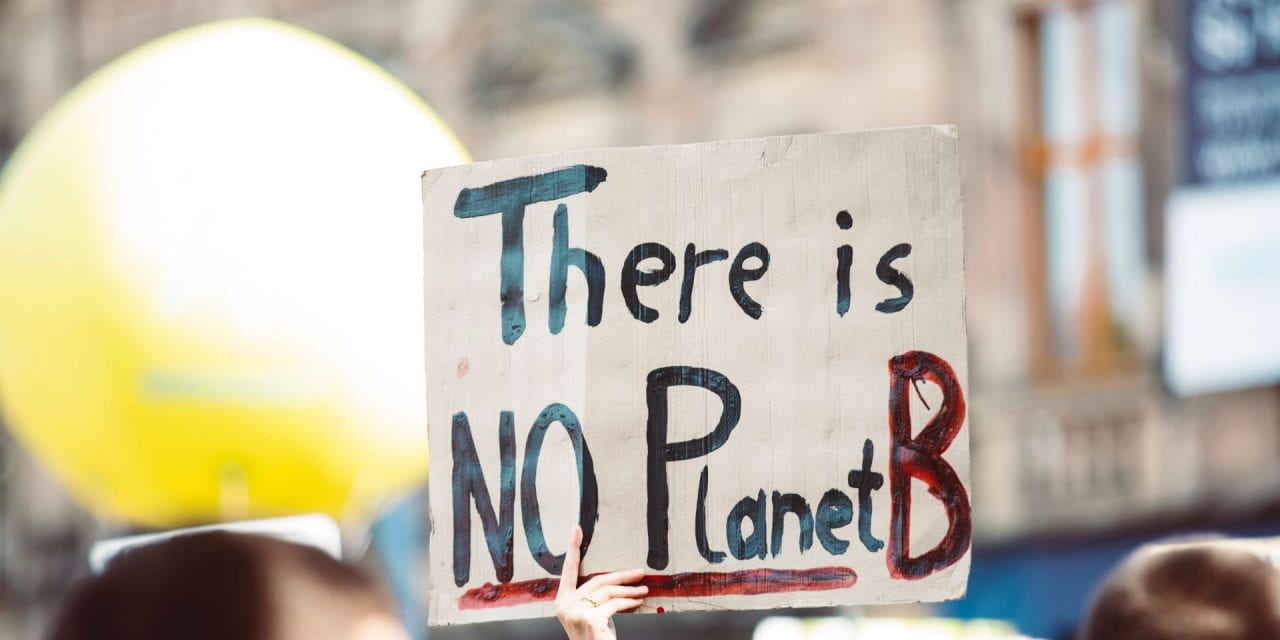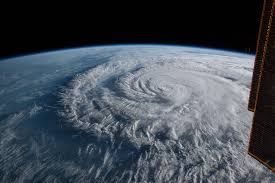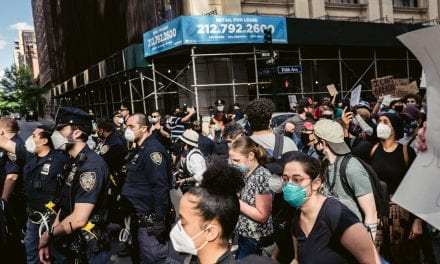While the world has battled the COVID-19 pandemic, increasingly extreme weather events and patterns plagued communities and regions across the globe, further exposing the infrastructural weaknesses of unsustainable human practices. Anthropogenic warming has been recognized as a challenge to the human livability of the Earth since the 1972 Declaration of the United Nations Conference on the Human Environment. Yet, the continued inability to effectively cooperate on the international level threatens humanity’s enduring existence.
Although global scientists have identified a 2 degree Celsius increase in global temperature as a critical limit for climate chaos policy, some politicians have prevented this maximum from becoming official language in any United Nations environmental agreement, even non binding declarations for fear of legitimizing the scientific consensus at the risk of dismantling business as usual (BAU) tactics.
The political fortunes of decision makers rely on older generations who benefit from the endurance of BAU policies. This practice fuels global inaction and is failing the Earth. It can only be efficiently addressed by elevating the emerging attitudes of young people to the forefront of decision makers’ priorities. Without a significant consideration of younger and future generations when developing sustainable international environmental policy, extreme climate chaos inevitably threatens every corner of the globe.
The phenomena caused by global human generated greenhouse gas (GHG) emissions has historically been described as global warming or climate change. The burgeoning use of the phrase “climate chaos” [1] more fully encapsulates the increasingly, varied, and frequent crises occurring as countries fail to curb their emissions. In the United States, examples of the climate crisis include the intensifying hurricanes slamming the eastern seaboard of the United States causing oil spillages and costing billions of dollars in damage [2]. They also include nearly the entire West under some level of drought designation and wildfire warning, costing farmers billions and threatening food scarcity [3], as well as a devastating winter ice storm in Texas that resulted in the deaths of 57 people and extensive power outages across the state [4] . These disasters all occurred in the year 2021.
The worrying trends of climate chaos can additionally be seen in an increasingly dry Southern Europe, where massive wildfires engulfed large swaths of Turkey, Lebanon, Greece, and Cyprus this summer, overwhelming fire fighting forces [5] . In Western Europe, however, a deluge of heavy rainfall led to severe flooding. There were 222 fatalities in Germany and Belgium from this disaster [6]. Looking east, flash floods surged in Japan, a heat wave sent many to the hospital in Korea, and wildfires consumed Siberia in the summer of 2021 [7]. A McKinsey & Company report found that, “by 2050, parts of Asia may see…lethal heat waves, extreme precipitation events, severe hurricanes, drought, and changes in water supply” [8]. It is evident in the last year alone that climate chaos is gaining in intensity and threatens the rights of young people everywhere to inherit a planet where they can breathe unpolluted air and live without fear of lethal summers or deadly winter storms.
After decades of failure on the part of the international community to ensure deep compliance and effective cooperation on climate chaos, the 2015 Paris Accord generated optimism. In order to capture agreement from as many states as possible, the Paris Accord was unusually structured with domestic governments given flexibility to create their own nationally determined plans to combat climate chaos. The state-centered focus allowed domestic politicians to determine exactly how stringent or weak their commitments to mitigating climate chaos would be based on their particular circumstances. The only “hard law” of Paris was the requirement for states to submit their proposals to the United Nations Framework Convention on Climate Change (UNFCCC).
Although the Paris Accord was the most successful of recent international environmental treaties – it gathering signatures from 192 states – the Council on Foreign Relations (CFR) now warns the Paris Agreement has failed to adequately restrain emissions. In fact, the Earth’s temperature has continued to increase due to the primary driver of, “human activities, namely the use of fossil fuels—coal, oil, and natural gas” [9].
The CFR elaborates that although 137 states have committed to net-zero emissions by 2050, the actual pledges made at Paris will allow global emissions to soar by 16% by 2030 [10]. These global policies are likely to result in a rise of 2.9 degrees Celsius in the next 79 years [11], nearly a whole degree higher than the need to protect life and livelihood.
Equipped with these statistics and the physical experience of climate chaos disasters in 2021, global leaders met at the recent 26th Conference of the Parties (COP26). COP26 was framed by host country UK as the last attempt for the international community to finally and forcefully take climate action before irreversible anthropogenic warming. Although countries reached historic agreements on ending deforestation and cutting methane emissions by 30% by 2030 – with China, the biggest GHG emitter, promising to develop a plan to reduce its methane and phase out coal production [12] – challenges still persist for these words to see action and there is no reason to be hopeful yet. Continued stagnation and BAU, captured by Swedish activist Greta Thunberg as, “blah, blah, blah” [13], may not allow today’s decision makers to fully experience the effects of a warming planet, but their children and future generations will most certainly deal with the consequences of their inaction.
Researchers at the University of Oslo examined the BAU phenomenon in 2009 in a paper published in Global Environmental Politics, one of the most prominent international relations publications specializing on the environment. Authors Hovi, Sprinz, and Underdal recognize BAU policies and continued climate inaction as a confluence of the time inconsistency problem, anarchy, and domestic politics [14].
They describe time inconsistency as an issue whose consequential effects will not come to fruition during a politician’s tenure, so any policies undertaken during that decision maker’s tenure are unlikely to benefit that politician. Time inconsistency exists and is especially acute in creating sustainable environmental policy on the international level.
Decision makers like the U.S. president may be in office for at most eight years and in countries with parliamentary systems prime ministers may lose a vote of confidence at any time. However, action-spurring climate chaos events may be twenty or thirty years from now. This time inconsistency challenge is the foundation for the continuous BAU tactics that threatens human life on Earth.
There exists no incentive for decision makers to enact short term harmful, yet long term helpful legislation for mitigating climate chaos. Understanding this political decision in addition to a lack of international police to enforce Paris or COP26 commitments and 193 UN members all with 193 national interests, dismantling fossil fuel dependency is treated as nearly politically infeasible. The authors emphasize any effective solution to mitigating climate chaos must address all three of the identified problems.
While the future may appear bleak, potential lies in global decision makers prioritizing the interests of Millenial, Gen Z, and younger generations when overcoming the challenges of climate chaos. Simply put, when considering the impacts of climate chaos will overwhelmingly burden today’s youth and their future offspring, the logical solution is to implement international environmental policy with their preferences in mind. Siloing in on the interests of younger generations may be considered a form of rational ignorance, a solution offered by Hovi, Sprinz, and Underdal that requires deliberately refraining from acquiring information about attractive short term policies – fossil fuels – that might lead decision makers to deviate from long term plans for climate policy [15].
The American Republican political party, traditionally a staunch supporter of the development of fossil fuels, is undergoing a generational shift in its priorities, with 78% of Millenial- and Gen Z-identifying Republicans citing developing alternative energy sources as a higher priority than expanding fossil fuels [16]. Additionally, a study published by the Yale Program on Climate Change Communication finds 62% of Millenial or younger Americans “strongly” or “somewhat” support climate activists [17].
In a hyper partisan political era, the eco-conscious views of young people today in the United States transcend political parties. And younger Americans are not alone.
Environmental attitudes transcend sovereign state boundaries. Research studying the attitudes of youth in the United Kingdom, Finland, France, U.S, Portugal, Brazil, India, the Philippines, and Nigeria show a similar perspective, with 83% of surveyed youth agreeing that people have failed to care for the planet [18].
These focused priorities from a diverse international younger generation were on display at COP26, where youth climate activists attended and protested outside the Conference. Representing nearly every continent from both developed and less developed countries, The New York Times writes, “a slew of activists from South America, Central America, Africa and Asia…addressed the crowd, calling out their national leaders for failings in their home countries and international leaders for ignoring the developing world” [19]. They included people like Greta Thunberg and Monicah Kamandau, a Kenyan climate activist, who, “has long called for the world’s richest countries that are the most responsible for climate change to pay their share of addressing the problem, and for greater inclusivity of youth voices in debates and solutions” [20]. With no agenda besides their humanity and futures continuously being sidelined in favor of unsustainable environmental policies, they rightfully assert they are the most vulnerable, affected demographic of climate chaos and deserve the highest stakeholder position. The attitudes of young people -if effectively prioritized internationally- have the ability to prevent irreversible anthropogenic damage.
Whether decision makers elevate the voices of youth regarding climate chaos remains to be seen. The challenges time inconsistency, anarchy, and domestic politics pose for international environmental policy still loom large. Yet, the implications of another COP and international agreements in which impressive words from global decision makers translate into insubstantial policy action are considerable.
Whole regions of the world are projected to become unlivable within the lifespan of Millenials, Gen Z, and younger. And the extreme climate chaos events of 2021 will almost certainly become deadlier. The 2.9 degree projected increase in the next 79 years means rising and warmer seas. It means more destructive floods, fires, hurricanes, heat waves, droughts, all with increasing frequency. At COP26 UN Secretary General, António Guterres, aptly stated, “Enough of burning and drilling and mining our way deeper…We are digging our own graves” [21]. It is imperative that environmentally unsustainable policies be scrapped and younger generations’ interests prioritized in order to effectively advance effective international progress on preserving a liveable planet.
Reference List
[1] “Overview: Weather, Global Warming and Climate Change.” NASA. August 24, 2021. Accessed November 15, 2021. https://climate.nasa.gov/resources/global-warming-vs-climate-change/.
[2] Tabuchi, Hiroko, and Blacki Migliozzi. “Satellite Images Find ‘Substantial’ Oil Spill in Gulf After Ida.” The New York Times. September 04, 2021. Accessed November 15, 2021. https://www.nytimes.com/2021/09/04/climate/oil-spill-hurricane-ida.html.
[3] Fountain, Henry. “The Western Drought is Bad. Here’s What You Should Know About It.” The New York Times. October 21, 2021. Accessed November 29, 2021. https://www.nytimes.com/article/drought-california-western-united-states.html.
[4] Weber, Andrew. “Texas Winter Storm Death Toll Goes Up To 210, Including 43 Deaths In Harris County.” Houston Public Media. July 14, 2021. Accessed November 15, 2021. https://www.houstonpublicmedia.org/articles/news/energy-environment/2021/07/14/403191/texas-winter-storm-death-toll-goes-up-to-210-including-43-deaths-in-harris-county/.
[5] “Fires Rage in Turkey.” NASA. Accessed November 15, 2021. https://earthobservatory.nasa.gov/images/148650/fires-rage-in-turkey.
[6] Dewan, Angela. “Germany’s Deadly Floods Were up to 9 times More Likely Because of Climate Change, Study Estimates.” CNN. August 24, 2021. Accessed November 15, 2021. https://www.cnn.com/2021/08/23/europe/germany-floods-belgium-climate-change-intl/index.html.
[7] Greenpeace East Asia. “5 Ways the Climate Crisis Will Change Asia.” Greenpeace East Asia. Accessed November 15, 2021. https://www.greenpeace.org/eastasia/blog/6802/5-ways-the-climate-crisis-will-change-asia/.
[8] Woetzel, Jonathan, Oliver Tonby, Mekala Krishnan, Yuito Yamada, Suvojoy Sengupta, Dickon Pinner, Ruslan Fakhrutdinov, and Tetsu Watanabe. “Climate Risk and Response in Asia.” McKinsey & Company. June 24, 2021. Accessed November 15, 2021. https://www.mckinsey.com/business-functions/sustainability/our-insights/climate-risk-and-response-in-asia.
[9] “Global Climate Agreements: Successes and Failures.” Council on Foreign Relations. Accessed November 15, 2021. https://www.cfr.org/backgrounder/paris-global-climate-change-agreements.
[10] Volcovici, Valerie, and Kate Abnett. “Factbox: COP26: What Would Success Look like at the Climate Summit?” Reuters. October 31, 2021. Accessed November 15, 2021. https://www.reuters.com/world/uk/cop26-what-would-success-look-like-climate-summit-2021-10-31/.
[11] “The CAT Thermometer.” Climate Action Tracker. Accessed November 15, 2021. https://climateactiontracker.org/global/cat-thermometer/.
[12] Plumer, Brad. “Here’s What Happened on the Final Day of the COP26 Climate Talks.” The New York Times. November 15, 2021. Accessed November 15, 2021. https://www.nytimes.com/live/2021/11/13/climate/cop26-glasgow-climate-summit#cop26-climate-summit-takeaways.
[13] Plumer, Brad. “Here’s What Happened on the Final Day of the COP26 Climate Talks.” The New York Times. November 15, 2021. Accessed November 15, 2021. https://www.nytimes.com/live/2021/11/13/climate/cop26-glasgow-climate-summit#cop26-climate-summit-takeaways.
[14] Hovi, Jon, Detlef F. Sprinz, and Arild Underdal. 2009. “Implementing Long-Term Climate Policy: Time Inconsistency, Domestic Politics, International Anarchy.” Global Environmental Politics 9 (3): 20–39. doi:10.1162/glep.2009.9.3.20.
[15] Hovi, Jon, Detlef F. Sprinz, and Arild Underdal. 2009. “Implementing Long-Term Climate Policy: Time Inconsistency, Domestic Politics, International Anarchy.” Global Environmental Politics 9 (3): 20–39. doi:10.1162/glep.2009.9.3.20.
[16] Funk, Cary, and Meg Hefferon. “U.S. Public Views on Climate and Energy.” Pew Research Center Science & Society. July 12, 2021. Accessed November 15, 2021. https://www.pewresearch.org/science/2019/11/25/u-s-public-views-on-climate-and-energy/.
[17] “Young Adults, across Party Lines, Are More Willing to Take Climate Action.” Yale Program on Climate Change Communication. June 15, 2020. Accessed November 15, 2021. https://climatecommunication.yale.edu/publications/young-adults-climate-activism/.
[18] Harrabin, Roger. “Climate Change: Young People Very Worried – Survey.” BBC News. September 14, 2021. Accessed November 15, 2021. https://www.bbc.co.uk/news/world-58549373.
[19] Specia, Megan, and Stephen Castle. “Young Activists Want Action as Protesters Rally at COP26.” The New York Times. November 05, 2021. Accessed November 15, 2021. https://www.nytimes.com/2021/11/05/world/europe/cop-protests.html.
[20] Specia, Megan, and Stephen Castle. “Young Activists Want Action as Protesters Rally at COP26.” The New York Times. November 05, 2021. Accessed November 15, 2021. https://www.nytimes.com/2021/11/05/world/europe/cop-protests.html.
[21] “We’re Digging Our Own Graves by Burning, Drilling, Mining Deeper, Warns Secretary-General in Stark Message to World Leaders, as COP26 Begins | Meetings Coverage and Press Releases.” United Nations. Accessed November 15, 2021. https://www.un.org/press/en/2021/sgsm20997.doc.htm.







